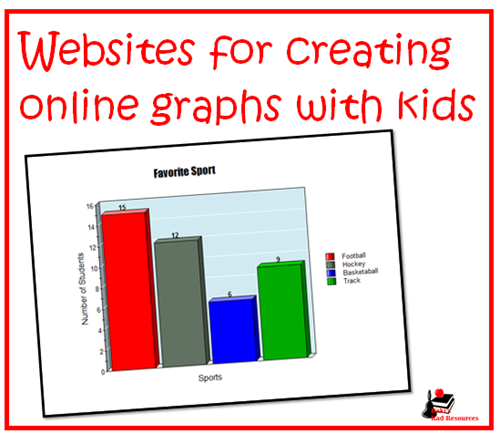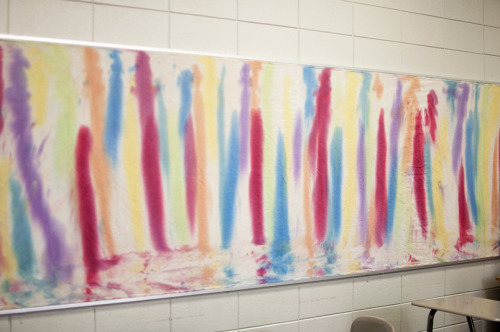Learning English as a Foreign Language with Laughter

Laughter, the Best English Language Learning Tool
see full.
"What does education often do? It makes a straight Henry David Thoreau"
text online at: http://www.guardian.co.uk/education/2007/dec/05/tefl2
When asked, most experienced language teachers will readily admit that they encourage humour and laughter in their classrooms and plan it into their lessons. So what is the role of unplanned and spontaneous humour - moments when the whole class momentarily erupts in laughter before returning to the task at hand?
In the early days of each course, when they meet their class for the first time, language teachers convey many hidden messages through their body language, their overall demeanour and the manner in which they address their students. One clear message (usually implicit) relates to the kind of atmosphere they wish to foster in their classroom.
In order to develop a spirit of informality within their classes such teachers attempt to reduce the social distance between themselves and their students by behaving in friendly and approachable ways. They smilingly encourage students to speak and applaud their efforts, being supportive when errors are made.
They may sometimes demonstrate http://www.eslcafe.com/grammar.html in a humorous way that they themselves find unfamiliar sounds difficult to pronounce. If they make an error on the board (as most teachers do from time to time) they may make a quick quip to show that they are not embarrassed - and to demonstrate that mistakes are a natural part of the learning process.
When it is appropriate to pull individuals into line, teachers tend to do so firmly but with a light touch, returning to the business of the lesson as quickly as possible. (By disciplining students with humour, teachers reduce the risk of alienating potentially tricky individuals.)
Language learners quickly absorb the message that their teacher welcomes spontaneous laughter within the classroom (provided it is of the supportive 'laughing with' and not of the destructive 'laughing at' kind). Sensing that their teacher has given them permission to laugh, many classes start to relax and to behave in readily responsive ways.
Full text of this article available online at:
http://www.guardian.co.uk/education/2007/dec/05/tefl2
Prof. Larry M. Lynch is anEFL Teacher Trainer, Intellectual Development Specialist, author and speaker.
"Teaching should be such that what is offered is perceived as a valuable gift and not as a hard duty."
He has written ESP, foreign language learning, English language teaching texts and hundreds of articles used in more than 135 countries. Get your FREE E-book, "If you Want to Teach English Abroad, Here's What You Need to Know" by requesting the title at: lynchlarrym@gmail.com Need a blogger or copywriter to promote your school, institution, service or business or an experienced writer and vibrant SEO content for your website, blog or newsletter? Then E-mail me for further information.

Oh Dear...
If you're new here, you may want to subscribe to my RSS feed. Thanks for visiting!
It looks like the post-hacking cleanup is ongoing.
This is definitely worth bookmarking for the record. I wondered how exactly my kids will respond talking about a similar matter. I'm so happy EFL teaching exercises provides lots of solutions to try on the long run.
The site has been reset to its defaults as I've installed a fresh version of the theme I was using, so bear with me if things look odd or difficult to use.

If you are an edu-blogger or any other kind of blogger, be sure to keep your blogging platform up to date AND your themes up to date, and don't keep old themes or other things lying around. They can be very bad news.

http://www.altaesl.com/
Possibly Related Posts:
Measuring Up Live

Every year, I have asked our ESOL program to purchase and online program called Measuring Up Live.
http://www.manythings.org/
I have found that this program is a great resource for yearly, on-line SOL preparation. The standards on MUL correspond to Virginia Standards. In addition, I can select which standards I want my students to work on, which correspond to standards they are working on in their general Math, Science and Language Arts classes. For example, for Life Science and Physical Science, I can select the first category of “Scientific Investigation, Reasoning, and Logic.” I am able to monitor the progress of my student understanding and retention in this category via the administrative program. MUL provides a performance key of three levels “Below Proficient, Proficient, Advanced Proficient.” My student’s proficiency level is currently set at 70%, which then allows me to move them onto a new standard when they have shown me that they have obtained the measured goal for comprehension.
My students enjoy this program because it provides instantaneous feedback for students after every question is answered. If the student answers the questions incorrectly, an explanation of the incorrect answer is provided. Students are required to continue until they select the correct answer.

I am always prepared to study something new that can help me withteaching exercises. Regardless if it isn't directly connected with it. That's the good thing about our field. Everything is related to it one way or another.
Finally, students enjoy a small game after they answer 5 questions correctly.
The Holiday Dilemma

Around the holidays, teachers forums light up with questions and comments about what to teach about winter holidays in public schools. Questions generally surround around not upsetting parents, and whether it is really a part of the curriculum. For most curriculums, holidays are NOT a part of the curriculum – for better or worse. However, this doesn’t stop most teachers from including holidays in their activities during the winter months. Generally, we integrate it into our writing, our read alouds and of course build in some fun, crafty activities.
Personally, I think that holidays should be a part of our curriculum, not as a craft opportunity, but as a teaching opportunity - as long as they are presented in a way that promotes acceptance of people and understanding of cultures. When Christmas is presented as the only holiday that happens this time of year, it leaves out a part of your population and gives those who celebrate Christmas the idea that everyone in the world is the same as them. This does a disservice to both groups of children – those who celebrate Christmas and those who don’t.
Holidays present us with the opportunity to let kids discover cultures around the world that they didn’t even know existed. It also provides us with the opportunity to show students that cultures and holidays are more similar than they are different.
When I was teaching 1st grade at an American school in Morocco, I was asked to prepare a song for with my students to present in the “Winter Holidays Show”. I looked around at my options, knowing I didn’t want to sing a Christmas song with a population of students who were mainly Muslim. The winter songs like “Walking in a Winter Wonderland” didn’t make much sense either – not in a country that only sees snow in one or two mountain towns. By chance, I stumbled across a song called Eid is Here on YouTube. This song was based out of India and talked about Christmas, Eid and Diwali. What I loved most about the song was that it talked about the things in each holiday that were the same. Each holiday gave people a chance to: wear new clothes, eat special foods, spend time with family and friends and use special lights. While my students and I learned the song, we were able to learn about different holidays, but compare how they were similar. This was a concept that the kids easily grasped and one that allowed them to see each other in a new light, as someone who did things similar to how they themselves did things.
This experience encouraged me to write the reader’s theater: Light Up the World with Celebrations for a similar group of children. Before we performed the reader’s theater, we learned about a large variety of celebrations from countries and cultures around the world who use light as a part of their celebrations. I presented the information to my students using my Winter Holidays Power Point, and then we created a chart to help us compare and contrast different holidays.


Last year, I worked with some bloggers from around the world to create a Holiday Cookbook for Kids, full of recipes that are often found at holiday celebrations around the world, as special foods is another common feature of holiday celebrations worldwide.
No matter what holidays your students do or don’t celebrate, knowing about holidays celebrations around the world can help your students to identify that celebrations are a time for people to get together with family and friends, eat special foods, have special lights or decorations, wear special clothes, and be happy as a group. You may also talk about charity to others, as this is a part of many, many celebrations worldwide. Ignoring holidays in the classroom prevents true conversation about different cultures and pigeonholes students into thinking that all people are – and should be – the same.
So, during this winter holiday season, be sure to discuss holidays and how they bring people together. Include diverse holiday stories, encourage students to share how they celebrate different holidays, invite in guest speakers, do research on new holidays, watch videos about how holidays are celebrated in different countries, and throughout it all, encourage your students to look for those common themes that bring people together to celebrate and be happy.
http://a4esl.org/


Two Excellent iPad Apps to Help Students with Math Homework
October 29, 2014
Here are two excellent iPad apps for providing Math homework help for students.
"This might sound familiar for most of us. Nevertheless, I'm sure based upon my teaching activities expertise that have a look on the same topic from a unique angle is sort of like reinventing it. Except it is possible to start building up your skills rather than laying down the foundations of it."

In fact, these apps should be used only after students have tried all their best to solve their math problems. Both of these apps offer automatic solutions to mathematical expressions. The difference between the the two apps is that PhotoMath supports only printed math expressions while MyScript Calculator supports handwritten math formulae. PhotoMath allows learners to easily solve math problems by simply pointing their iPad's camera to them. Conversely, students can handwrite their math expressions on the screen of MyScript Calculator and automatic solutions will show up.
1- PhotoMath
http://teach.com/what/teachers-know/english-as-a-second-language-esl
PhotoMath is the world's first camera calculator. Just point the camera towards the mathematical expression, and PhotoMath instantly displays a correct result. By pressing the steps button, you can see the full step-by-step solution. Use it to get help when you're stuck solving a math problem. Children can use it as a tool which helps them to learn Math, while parents can use it to check the homework to their children. With PhotoMath, you can have a Math teacher in your pocket.
Watch this video to learn more abut PhotoMath
2- MyScript Calculator
Easy, simple and intuitive, just write the mathematical expression on the screen then let MyScript technology perform its magic converting symbols and numbers to digital text and delivering the result in real time.
The same experience as writing on paper with the advantages of a digital device (Scratch-outs, results in real time, …). Solve mathematical equations by hand without actually having to crunch the numbers yourself.
Follow us on : Twitter, Facebook , Google plus, Pinterest .

Online Graphing Tools
For two years, I was the Technology Specialist at a school in Georgia.
I should keep this in mind given thatEFL teaching activities is actually my bread and butter. On the other hand, I wouldn't like treating something as it were written in rock nor should you. It is an interesting idea though and will worth additional conversation. Let us get back to it to see what lengths we're going to get by rolling this deeper.
During that time, I amassed a large collection of websites that I use with my students. You can download my E-Book of Websites for the Elementary Classroom for free from Teachers Pay Teachers or Smashwords, or, you can check back here each week for the website suggestion.

When I taught in the computer lab, one of the skills every grade level worked on was creating graphs. My K – 2 students worked on kid friendly software that was installed on our computers and I introduced the students in 3rd – 5th grade to Excel. While these are great options, they cost a lot of money. Luckily, there are free, online graphing programs available, which work wonderfully in the classroom. Here are two I particularly like:

Online Chart Tool

http://www.rong-chang.com/
Create a Chart - Classic


Both of these tools allow students to choose the correct type of graph, enter data, title their graph, label their axis and customize the color scheme. Once your graph is created, the Online Chart Tool allows you to download your graph directly to your computer while the Create a Chart site gives you a printable graph.
How could you use these websites in your classroom?


The Power of the Imagination
Your day breaks with the sound of your alarm clock which was set for 6 o’ clock. So it
 starts to go off and you stop it as usual. Then you take a shower and have breakfast and there you are. Your routine has just started. Now you are probably in your car or on your bus on your way to your destination, but let’s stop and change our routine for a moment and start to recall the years when we were kids. Let’s remember those days when playing around and using our imagination were our delightful routines.
starts to go off and you stop it as usual. Then you take a shower and have breakfast and there you are. Your routine has just started. Now you are probably in your car or on your bus on your way to your destination, but let’s stop and change our routine for a moment and start to recall the years when we were kids. Let’s remember those days when playing around and using our imagination were our delightful routines.Do you remember the time when you loved to imitate your favorite heroes you watched
 on TV? Perhaps you were one of those kids who wore the table cloth on their backs as if it were your cape and imagined you were Superman or maybe you were that kid who enjoyed climbing walls simulating you were Spiderman. I can continue with the list of superheroes. The question is what if just for a moment, we could play those games again or even better make those games become true and real.
on TV? Perhaps you were one of those kids who wore the table cloth on their backs as if it were your cape and imagined you were Superman or maybe you were that kid who enjoyed climbing walls simulating you were Spiderman. I can continue with the list of superheroes. The question is what if just for a moment, we could play those games again or even better make those games become true and real.I know it sounds crazy, but just let’s use your imagination and visualize yourself having one of the powers of your favorite heroes of your childhood. Imagine you can fly. You
 would be able to avoid traffic. I am very sure some people would like to be invisible, so they could escape from some undesirable people. Some people would use that power to eavesdrop some conversations.
would be able to avoid traffic. I am very sure some people would like to be invisible, so they could escape from some undesirable people. Some people would use that power to eavesdrop some conversations.
Well, I would not have thought this. Normally I enjoy new thoughts on classic ideas asESL exercises isn't like doing new things on a daily basis. Certainly it isn't like making car seats the whole day nevertheless there are always something to refresh somewhat. Even if you do not accept the beauty of life hides within the changes. Let us see what lengths we need to get.
Others would like to have the speed of Flash to go as fast as a beam of light. With that power people would be in different places in just a few minutes.
Another power that looks appealing would be the ability to stop time. With that power, I would stop time to take my friend’s pants off and he would end up without pants in the middle of a meeting or, even worse, in front of the girl he likes. The list of powers is endless and maybe at this moment you are thinking of what power you would like to have and what things you could do with it.
You may also be wondering at this moment what it has to do with our routines. Well,
 nowadays, there is more and more stress due to work and lots of people have lost their ability to use their imagination. Some people might say, ¨it is part of growing up.¨ I think it is an erroneous statement. The reason is simple and the fact is that we have a kid inside but we deny it. We don’t want the rest of the people to see that kid. You shouldn’t let that happen. Instead, allow yourself to dream and go beyond your everyday routine. You’ll enjoy it.
nowadays, there is more and more stress due to work and lots of people have lost their ability to use their imagination. Some people might say, ¨it is part of growing up.¨ I think it is an erroneous statement. The reason is simple and the fact is that we have a kid inside but we deny it. We don’t want the rest of the people to see that kid. You shouldn’t let that happen. Instead, allow yourself to dream and go beyond your everyday routine. You’ll enjoy it.Vocabulary
Be set for: When you program your alarm clock for a certain hour. Ex. Even though my alarm was set for 6 o clock, I couldn’t hear it.
Go off (v): To start to sound. Ex. The burglar alarm started going off when the thief broke into the house.
Recall (v): To remember. Ex. My grandmother still recalls the time when she was young.
Undesirable (adj): Not wanted. Ex. Some medicines are effective but they have undesirable effects such as nausea.
Eavesdrop (v): To listen to a conversation by spying it. Ex. The maid eavesdropped behind the door and heard the entire plan.
Beam (n): A line of light. Ex. A laser beam can cut steal.
Appealing (adj): Attractive. Ex. The idea of earning money with that business was appealing to the old man.
Endless (adj): When something doesn’t have an end. Ex. How the world was created is and endless discussion among scientifics.
Erroneous (adj): Not correct. Ex. To say that global warming is not a consequence of pollution is an erroneous conclusion.

Who was your superhero when you were a kid? What would you do if you had one of those super powers now? Do you still let your ¨ kid inside¨ imagine?
Send us your comments, opinions and any kind of feedback to goesling.wordpress@gmail.com. You can either write us an email or send us a voice message.
ESL.com/">http://esl.com/

THE SECOND CONDITIONAL
We use the Second Conditional to talk about imaginary situations or things that are unlikely to happen.

If I were invisible, I would listen to other people’s conversations. (imaginary situation)

If I won the lottery, I would quit my job. (that’s very unlikely to happen)
THE STRUCTURE OF A SECOND CONDITIONAL SENTENCE
IF CLAUSE MAIN CLAUSE (RESULT)
If + past simple would + infinitive
If I had a car, I would go to the beach more often.

If the IF CLAUSE comes first, we should use a “comma”. However, if the IF CLAUSE comes second, we don’t need a “comma”.

I would go the beach more often if I had a car.
We can also use COULD, MIGHT OR SHOULD instead of WOULD.
If Tom had a million dollars, he could go to Paris every weekend. (but maybe he would not)

If I were you, I shouldn’t worry about the problem.
If Susan weren’t so annoying, she might have more friends.
As we can see in the various examples, with the verb TO BE we always use the form WERE whatever the subject. (However, we may find people using WAS in informal situations)
When we use the verb TO BE in the IF CLAUSE, we can also use inversion.
If you were my son, I wouldn’t let you buy those shoes.
INVERSION: Were you my son, I wouldn’t let you buy those shoes.

